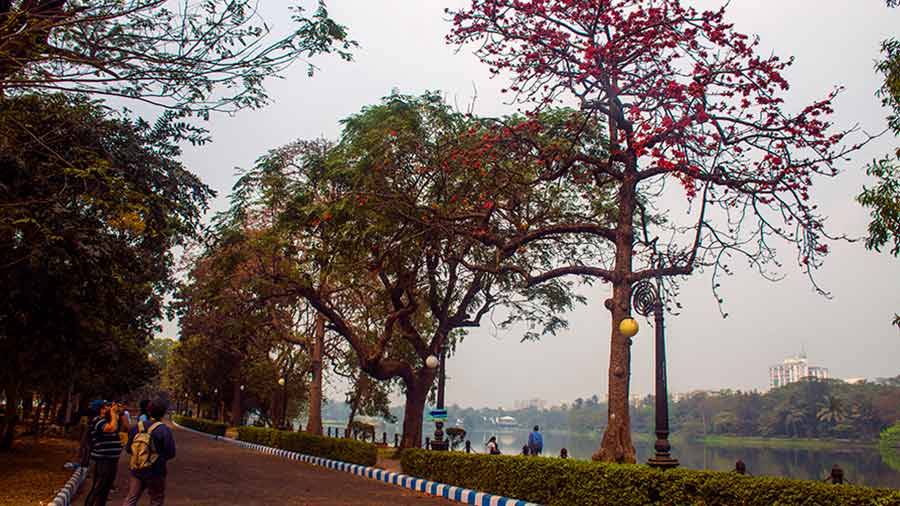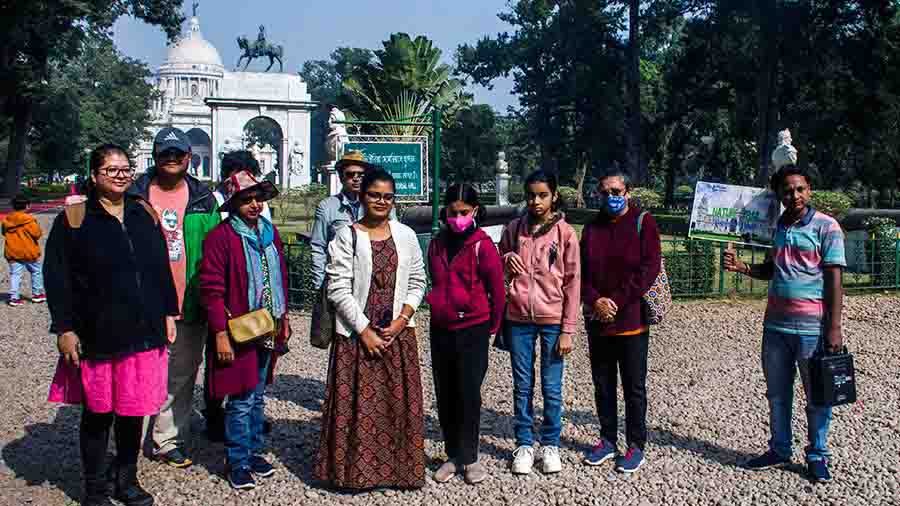The nip in the air is fast disappearing and the migratory birds are all set for the long journey back home. With winter coming to an end, spring cannot be far behind. The blooming Palash, Ashok and Shimul are all set to welcome the spring. Rabindra Sarborar (also known as Dhakuria Lake or simply the Lake) — a haven for bird watchers — is all set to welcome the spring with a riot of colours. The manmade lake dates back to the 1930s and is surrounded by a large green patch creating a rich biodiversity in the heart of the city. It is often referred as the lung of south Kolkata and is an ideal place for nature walks. The spring time provides ample opportunity for identifying trees and admiring their beauty.

Rudra Palash (African Tulip) in bloom
On February 18, 2023 about half a dozen nature lovers met in front of the Safari Park gate at Rabindra Sarobar to explore the trees of one the few green patches of the city. Debjit Mukherjee, an IT professional, was at the hub of activities. Identifying trees has been a childhood passion for Mukherjee and he has kept his passion alive in spite of his hectic professional commitments. He has started tree walks at Rabindra Sarobar since 2018. This has not only helped the birders and other nature lovers identify the trees but also helped them understand the ecosystem and the biodiversity surrounding the trees.
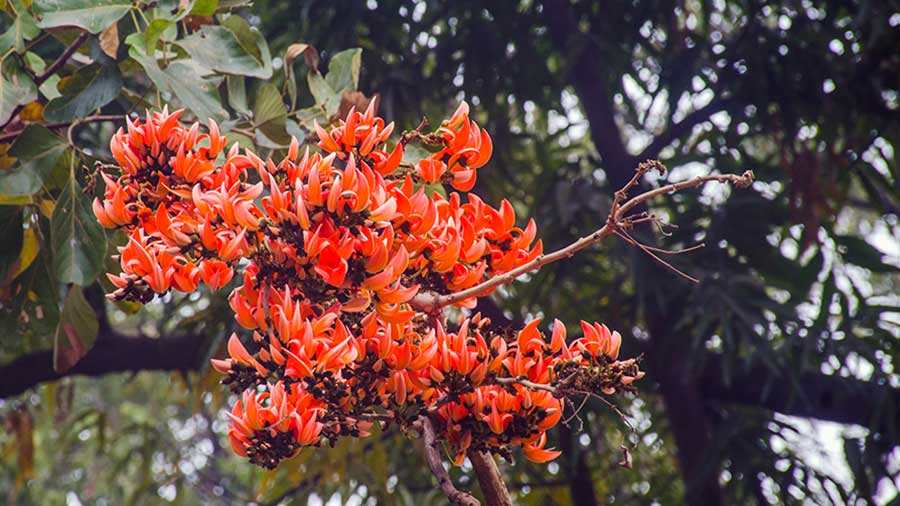
A bunch of blooming Palash (Flame of the Forest)
Also in the group was Kuntal Chaudhuri, a professor of botany at Vivekananda College. Chaudhuri said, “It was easy to identify the trees during the flowering and fruiting seasons, but for the rest of the year the trees can be identified by their leaf structure. He made some live demonstrations of both simple and compound leaves and showed the identification pattern.”
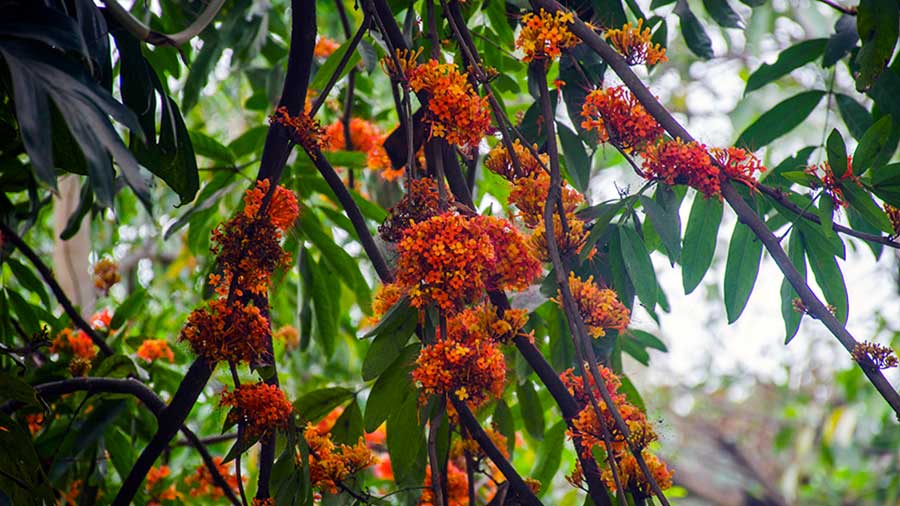
A bunch of Ashok flowers
Mukherjee had created cards for the different trees at Rabindra Sarobar and before we reached a particular tree, the card was delivered to us via a whatsapp group. No wonder Mukherjee had blended his technological skills with his passion for trees. The card in PDF format started with the English name of the tree followed by the scientific name along with Bengali and Hindi names. Next was a diagrammatic representation of the leaves followed by detailed description of bark, leaf, flower, fruit, range / habitat, trivia and notes, location coordinates and last but not least, a series of photographs showing different features of the tree. Although recently placards have been put in front of the trees mentioning the English, Bengali and scientific names of the trees and they do come up with a QR code but Mukherjee’s cards were far more informative.
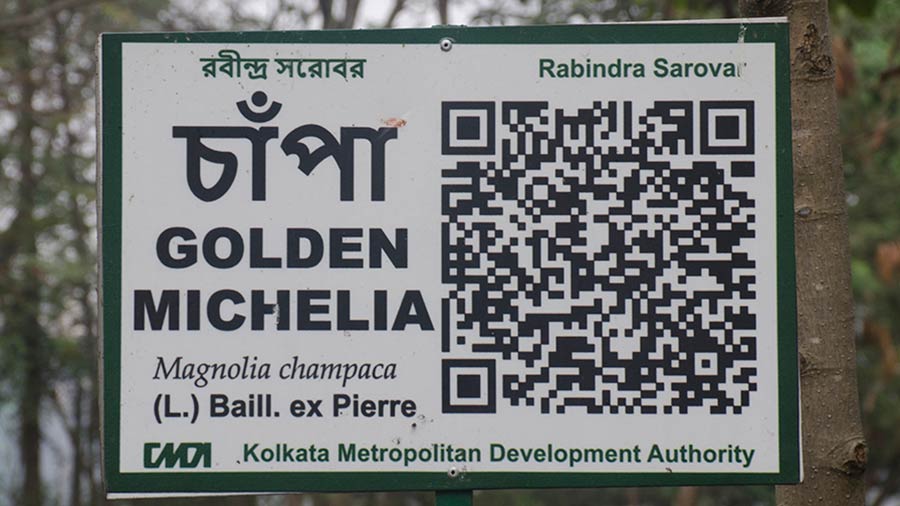
A board with tree names and other details including a QR code
The walk focused mainly on the flowering trees, like Rudra Palash, Palash, Ashok and Shimul. There are a number of Rudra Palash trees at Rabindra Sarobar. Also known as African Tulip, it is a native of dry tropical forests of Africa. The tree is known for its bright reddish-orange flowers. Unlike Rudra Palash, there are only a couple of Palash trees near the lake, out of which the one in the lily pool region is in bloom. Also known as the Flame of the Forest, this tree is found in abundance in Purulia and Jharkhand and turns the entire landscape to bright orange-red making it look like a fire. and hence the name. The lily pool region also has a few Ashok trees, known for its clusters of orange-red flowers.
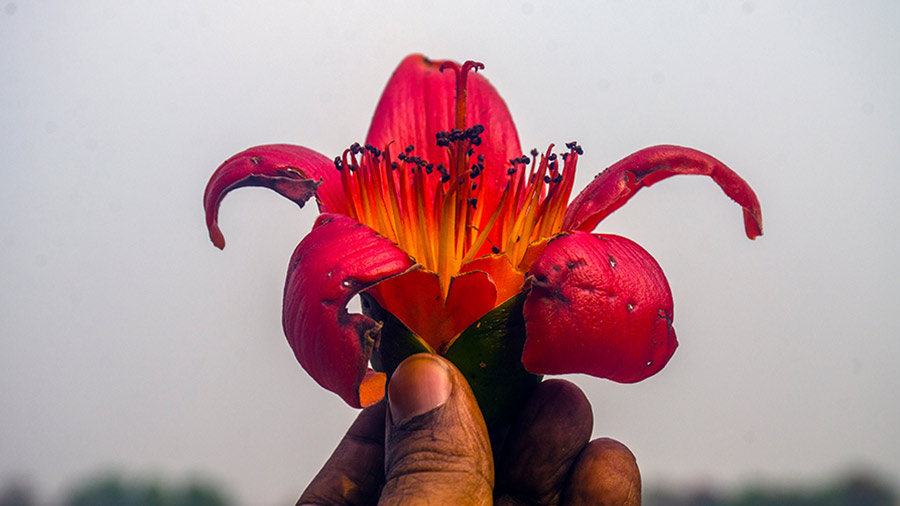
A close-up of a Shimul (Silk Cotton) flower
The Shimul (Silk Cotton) trees are found in abundance surrounding the lake and its bright red colour attracts a lot of birds. Sudip Ghosh, a birder, who has been documenting the birds of the lake over a decade, said, “These trees are very important for the lake’s biodiversity but recent planting of ornamental trees can reduce the bird count drastically.”
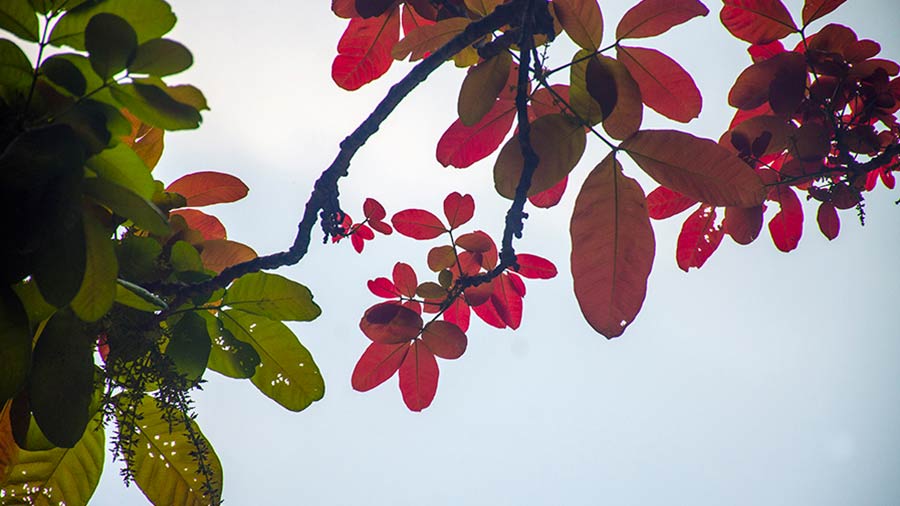
Red leaves of Kusum Tree
Tirthankar Roy Chowdhury, another nature lover and lake frequenter, added, “Replacing the undergrowth with manicured lawns can spell disaster to the amazing biodiversity of the lake.”
It is not the bright flowers that create a spectacle but the leaves of trees like Kusum and Pukur also get a bright shade of red during the spring time and are easily identifiable.
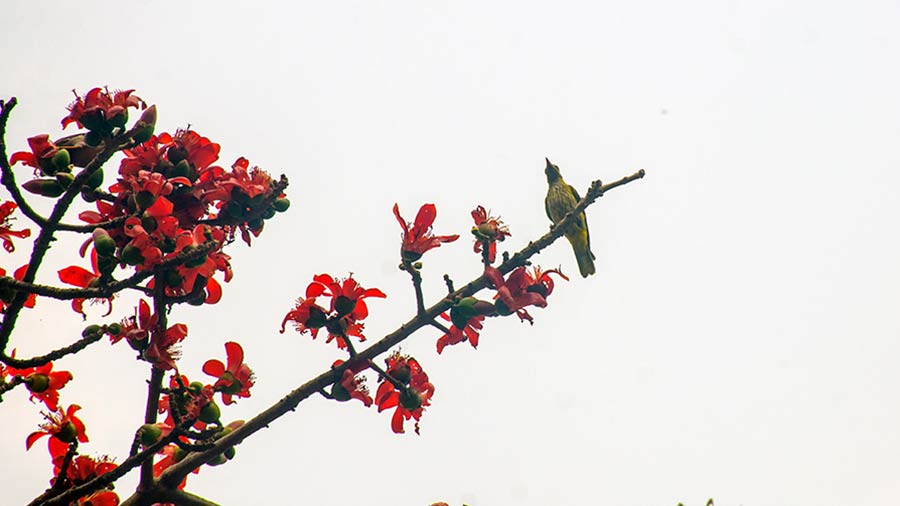
A Golden Oriole (female) perched on a Shimul tree
The walk ended on a happy note with plans for future walks to witness the red and yellow flowers of respectively Krishnachura and Radhachura, which will be blooming in a few weeks time. There are even plans for walks beyond the lake covering other areas of greater Kolkata.
